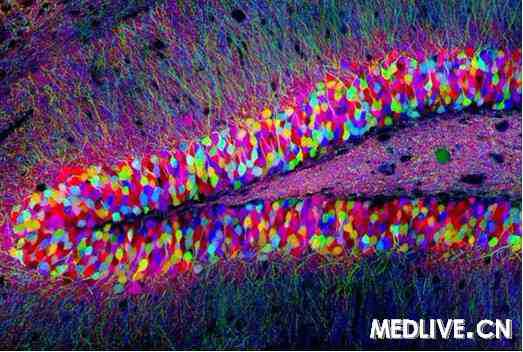PLoS Genet:脑细胞间正常通信过程停止的原因
2012-09-26 生物谷 生物谷
近日,一项最新研究揭示了退行性神经系统疾病的患者为什么大脑细胞之间停止正常通信过程。 科学家们认为,这一发现可以帮助大脑疾病如亨廷顿氏、阿尔茨海默氏症和帕金森氏病的治疗。教授Tom Gillingwater领导的团队分析了脑细胞之间信号连接是如何断裂的,并确定了控制该过程的6个重要蛋白质。 在大脑细胞之间发送信号的连接点称为突触,因受伤或疾病可停止突触的正常工作,大脑的信号传输就会被中断,最终
近日,一项最新研究揭示了退行性神经系统疾病的患者为什么大脑细胞之间停止正常通信过程。
科学家们认为,这一发现可以帮助大脑疾病如亨廷顿氏、阿尔茨海默氏症和帕金森氏病的治疗。教授Tom Gillingwater领导的团队分析了脑细胞之间信号连接是如何断裂的,并确定了控制该过程的6个重要蛋白质。
在大脑细胞之间发送信号的连接点称为突触,因受伤或疾病可停止突触的正常工作,大脑的信号传输就会被中断,最终无法修复。
罗斯林研究所科学家在确定控制大脑之间信号传输的6个重要蛋白质后,积极开发靶向这些蛋白质的药物,希望找出能防止脑细胞之间通信故障的药物。这项研究发表在PLoS Genetics杂志上,由威康信托基金、生物技术和生物科学研究理事会资助。
Comparative Proteomics and Molecular Genetics Uncovers Regulators of Synaptic and Axonal Stability and Degeneration In Vivo
Thomas M. Wishart, Timothy M. Rooney, Douglas J. Lamont, Ann K. Wright, A. Jennifer Morton, Mandy Jackson, Marc R. Freeman, Thomas H. Gillingwater*
Degeneration of synaptic and axonal compartments of neurons is an early event contributing to the pathogenesis of many neurodegenerative diseases, but the underlying molecular mechanisms remain unclear. Here, we demonstrate the effectiveness of a novel “top-down” approach for identifying proteins and functional pathways regulating neurodegeneration in distal compartments of neurons. A series of comparative quantitative proteomic screens on synapse-enriched fractions isolated from the mouse brain following injury identified dynamic perturbations occurring within the proteome during both initiation and onset phases of degeneration. In silico analyses highlighted significant clustering of proteins contributing to functional pathways regulating synaptic transmission and neurite development. Molecular markers of degeneration were conserved in injury and disease, with comparable responses observed in synapse-enriched fractions isolated from mouse models of Huntington's disease (HD) and spinocerebellar ataxia type 5. An initial screen targeting thirteen degeneration-associated proteins using mutant Drosophila lines revealed six potential regulators of synaptic and axonal degeneration in vivo. Mutations in CALB2, ROCK2, DNAJC5/CSP, and HIBCH partially delayed injury-induced neurodegeneration. Conversely, mutations in DNAJC6 and ALDHA1 led to spontaneous degeneration of distal axons and synapses. A more detailed genetic analysis of DNAJC5/CSP mutants confirmed that loss of DNAJC5/CSP was neuroprotective, robustly delaying degeneration in axonal and synaptic compartments. Our study has identified conserved molecular responses occurring within synapse-enriched fractions of the mouse brain during the early stages of neurodegeneration, focused on functional networks modulating synaptic transmission and incorporating molecular chaperones, cytoskeletal modifiers, and calcium-binding proteins. We propose that the proteins and functional pathways identified in the current study represent attractive targets for developing therapeutics aimed at modulating synaptic and axonal stability and neurodegeneration in vivo.
版权声明:
本网站所有注明“来源:梅斯医学”或“来源:MedSci原创”的文字、图片和音视频资料,版权均属于梅斯医学所有。非经授权,任何媒体、网站或个人不得转载,授权转载时须注明“来源:梅斯医学”。其它来源的文章系转载文章,本网所有转载文章系出于传递更多信息之目的,转载内容不代表本站立场。不希望被转载的媒体或个人可与我们联系,我们将立即进行删除处理。
在此留言






#NET#
55
#Gene#
45
#Genet#
45
#脑细胞#
55